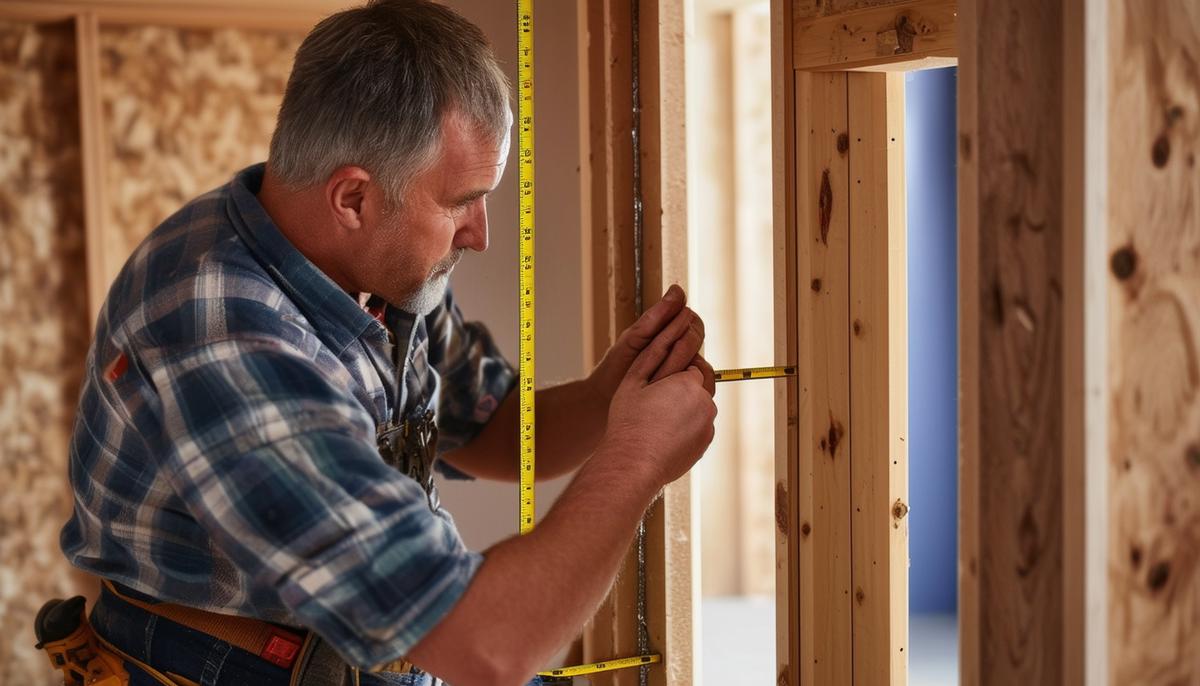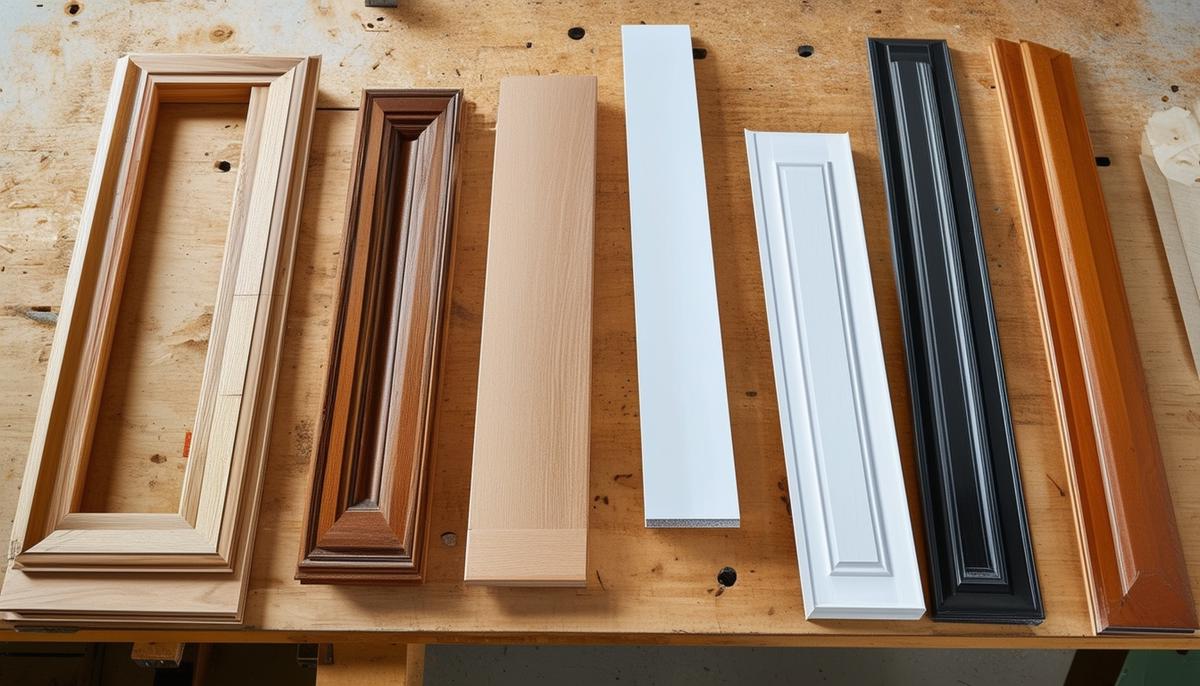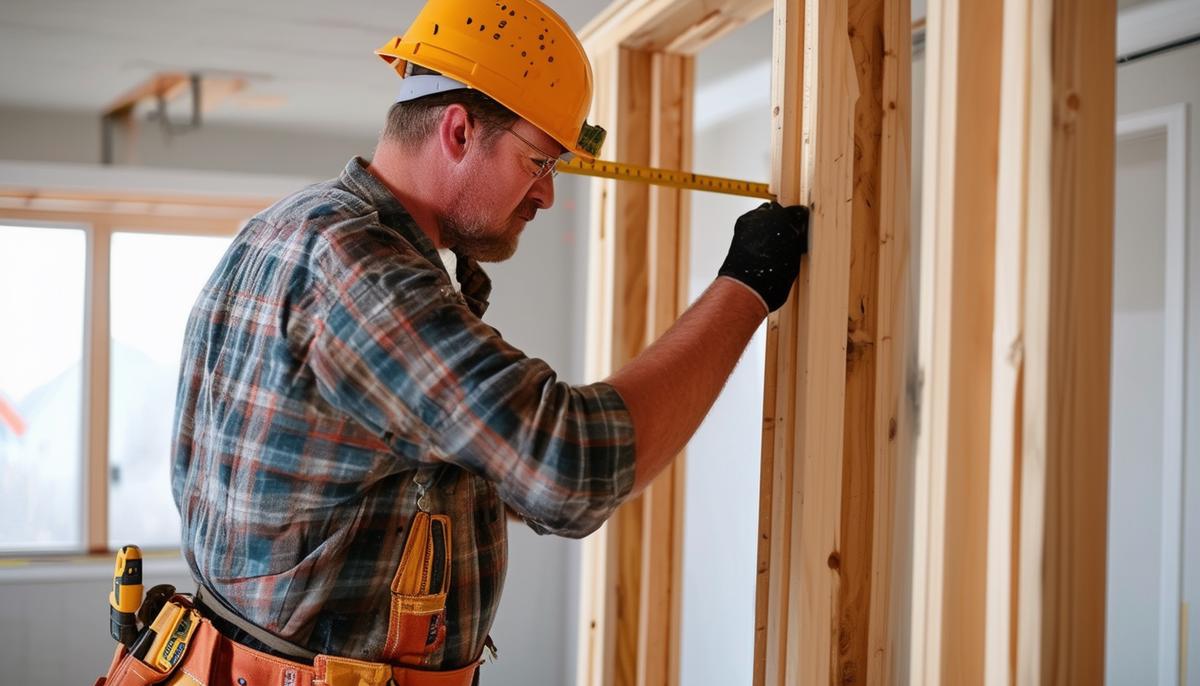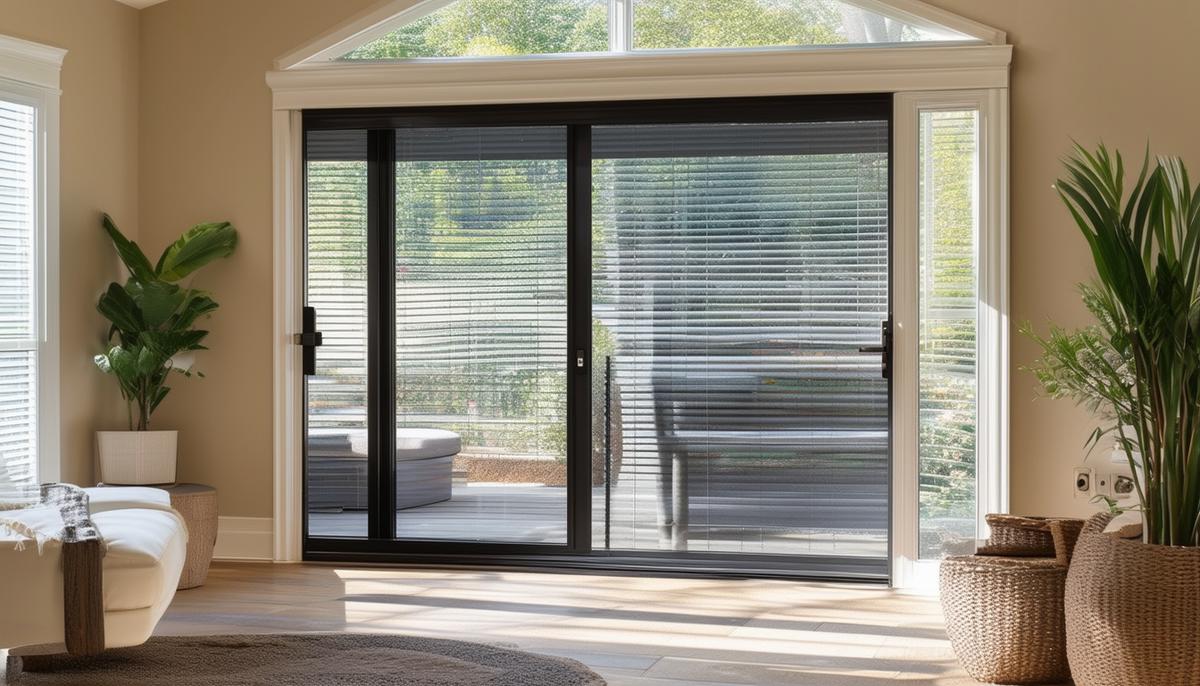Door Measurements
Precise measurements form the backbone of framing a door opening. Start by settling on the standard height, which for sliding patio doors is typically around 80 inches. Now, the width—this can range from 60 to 96 inches. Jot down these dimensions correctly, as even a slight miscalculation can lead to a poor fit and unexpected costs.
If you're dealing with custom-sized doors, be extra careful. Take your time to measure both the width and height. Don't rush this step. When measuring for the door frame, account for the frame material. Vinyl often needs a bit more wiggle room compared to wood or fiberglass, which are more rigid. Consider the potential for material expansion and contraction, especially in fluctuating climates.
Place the bottom plate accurately on the ground line directly where the door will stand. Secure it well. Measure diagonally from the bottom left corner to the top right corner of where the door will sit, and then from the bottom right corner to the top left. These measurements should match exactly. If not, adjust until they do for a perfectly squared frame.
Stabilize the top plate when you get those measurements to match. This prevents shifts that could unravel your hard work. Double-check everything. Remember, accurate measurements consider the materials and the environment. Get this initial step right, and you set the stage for a smooth installation.

Choosing Frame Materials
Choosing the right frame material affects everything from cost to maintenance and energy efficiency.
- Vinyl is budget-friendly and requires minimal upkeep. However, be wary if you live in a place with extreme temperature swings, as vinyl can warp, leading to potential air leaks.
- Composite frames offer more robustness. These use a mix of wood particles and resin, making them pricier but more stable under fluctuating conditions. They won't warp like vinyl and tend to form a tighter seal, keeping your home cozy and energy-efficient.
- For durability, consider aluminum. It's lightweight and resistant to rot and corrosion. But if you're in a hot climate, it might not be the most energy-efficient option, as aluminum conducts heat.
- Wood frames offer excellent insulation and a timeless, natural look. The downside? They need regular maintenance and can be prone to water damage.
- The crème de la crème is fiberglass. Fiberglass frames are durable, often mimicking the look of wood without the hefty maintenance. They're resistant to the elements, energy-efficient, and won't warp or rot, though they come with a higher price tag.
In the end, choosing the right frame material comes down to balancing cost, maintenance, durability, and energy efficiency. Think about your local climate, willingness to maintain the frames, and how much you're prepared to invest initially.

Installing the Frame
Ensure your bottom plate is securely anchored to the ground. Once the bottom plate is set, move on to the top plate, making sure it lines up perfectly with the bottom.
Measure diagonally from the bottom left to the top right, then from the bottom right to the top left. These measurements need to match exactly for a perfectly square frame, which is crucial for the smooth operation of your sliding door.
Applying sheathing while the frame is on the ground can save effort. Lay the frame down flat and attach the sheathing securely. This strengthens the frame and makes it easier to handle during installation.
Once the sheathing is on, lift the frame into position and align the edges with your floor and ceiling plates, securing them with nails or screws. Double-check your diagonal measurements one last time before firmly anchoring the frame to the structure.
A secure and well-aligned frame is vital for the overall stability and operation of your sliding patio door. A little extra time spent double-checking now will save you from potential issues down the road.

Additional Features and Options
Consider integrating additional features to elevate the functionality, security, and energy efficiency of your sliding patio door.
- Window tinting helps control sunlight entering your home, reducing heat and glare while adding privacy.
- Retractable screens allow you to leave the door open without inviting in bugs, tucking away neatly when not in use.
- Pet panels allow your furry friends to come and go as they please, reducing wear and tear on your door.
- Built-in blinds provide a hassle-free way to control light and privacy, with no tangled cords or dusting slats.
- Extra insulation around your door frame can help maintain your home's temperature, reduce energy bills, and provide a more comfortable living environment.
- Smart locks allow you to control your patio door's lock with your smartphone or voice commands, adding convenience and security.
- For the ultimate in convenience, consider automatic sliding doors that open and close with a simple wave or push of a button.
By incorporating these features during the initial installation, you save both time and future hassle, boosting the practical aspects of your sliding door and adding value and longevity to your investment.

- American National Standards Institute (ANSI). Window and Door Standards. ANSI, 2019.
- U.S. Department of Energy. Energy Efficiency for Windows and Doors. DOE, 2021.
- National Association of Home Builders (NAHB). Residential Construction Performance Guidelines. NAHB, 2020.
